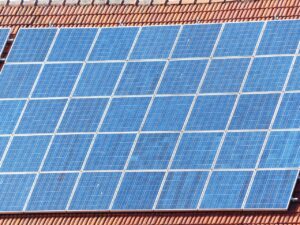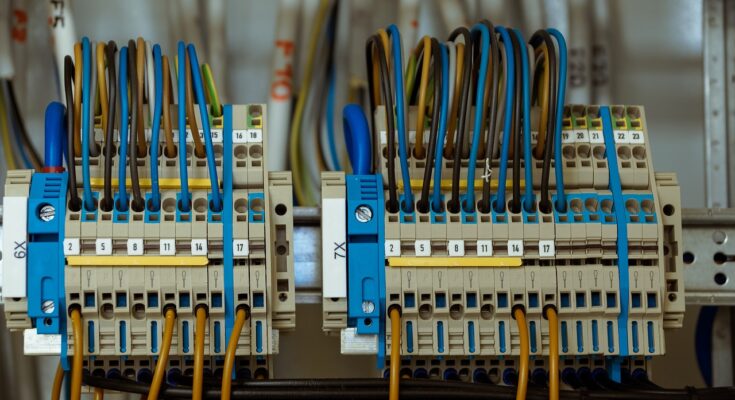Electric systems are critical in a house as they make it possible for lights, heating systems, entertainment systems, and home gadgets to be functional. Therefore, whether a homeowner is building a new house, renovating an existing one, or simply maintaining electrical systems, they must understand the various types of electrical systems in a home. This article will examine the different categories of electrical systems usually found around the house, their merits, and their demerits.
1. A conventional electrical system
Overview:
This is the oldest electrical system that has retained its essence in its use, as the name describes it. We commonly refer to it as the conventional or basic electrical system. Typically, builders build this system assuming the home has a single-phase AC supply for power distribution.
Components:
Service panel
The service panel, which collects power from the service utility and facilitates its provision to circuits within the house, can be considered the centre of the electrical wiring in the house.
Wiring:
Insulated copper or aluminium wires run throughout the house to enable outlets, switches, and appliances.
Circuit Breakers:
They safeguard the circuit by cutting off power in the event of a fault, proving to be highly beneficial during overloads or short circuits.
Advantages:
The system is simple to design and straightforward to install and operate.
Most houses commonly use this inexpensive and widely accessible material. –
Issues:
Not suitable for larger homes or electricity-intended use; electric wiring may need to be replaced in old buildings for building safety.
2. Modern Electrical System
Overview:
In today’s age of technology, oversimplified intelligent electrical control centres are emerging and being more widely adopted in residential smart homes. They provide automation, energy monitoring, and IoT devices.
Components:
Smart Panels and Breakers:
Smart panels and breakers permit remote control and monitoring of various devices using apps or a home automation hub like Google or Alexa. They can also notify you if a fault has occurred and will clear any Consumer Programmable restrictions on Windows.
Smart Lights and Outlets:
Using voice commands and other sensors, applications such as Google Assistant can control devices like bright lights and outlets. However, these devices also contribute to energy conservation by integrating this function into their design.
Energy Monitoring Systems:
Energy monitoring systems can consider buildings a constantly changing entity for American households. These systems assist US households in optimizing consumption and saving costs for future uses.
Advantages:
The advantages include having more control options for electrical devices around the house, improving efficiency, and minimizing cost.
Disadvantages:
Installing parts is more expensive, and maintenance necessitates a reliable internet connection.
3. Three-Phase Electrical System Overview:
Overview
Three-phase systems are suitable for bigger homes or luxury estates with high electrical requirements for home theatres, swimming pools, or massive electrical devices.
Components:
Three-Phase Wiring:
The system consists of three live phase wires and a neutral wire, each carrying a current 120 degrees out of phase with the others, providing a more stable power supply.
Three-Phase Electrical Block Transformer:
This block transformer distributes electricity in phases, making it convenient for residential use.
Advantages:
Its advantages include: Heavy-duty appliances and equipment can operate with a higher capacity. The delivery of energy and electricity is more stable, leading to a reduction in voltage fluctuations. It benefits households with substantial electrical needs.
Disadvantages:
High installation and maintenance costs. The installation and maintenance costs exceed those required for a home of average size. The service panel and transformers require additional space.
4. Overview of Low Voltage Electrical Systems:
Lighting fixtures, security systems, and other specific uses primarily utilize low-voltage electrical systems, eliminating the need for high voltage. These systems require lower voltage (usually 12V or 24V) wiring to run specific devices.
Components:
Low voltage wiring:
Wires have a copper base with a low voltage rating used to link low-energy equipment such as outdoor power lighting, doorbell devices, or some small appliances.
Transformers:
They directly convert a 120V AC supply into a low voltage that powers comparable lighting or security systems.
Advantages:
Smaller devices and systems are safe and energy-efficient.
The low voltage reduces the risk of electrical shocks.
We recommend outdoor and low-power devices like garden lights and landscape illumination.
Disadvantages:
Only a few applications can utilize this feature.
Larger devices/appliances may have power deficiencies.
5. A solar electrical system
Overview:
Increasingly, homesteaders are factoring in solar, an eco-friendly, bill-reducing electricity generator option, as part of their extended power needs due to the effects of climate change.
Components:
Solar Panels:
A solar system uses the sun’s energy to power a home.
Located at a specific location on the house’s roof, these convert sunlight into electrical energy.
Inverter:
Working with the panels, the inverter converts the DC (direct current) energy the panels produce into AC (alternating current) electricity for use at home.
Battery Storage (optional):
When paired with batteries, those setups could store energy produced throughout the day and use it at night or on cloudy days.
Grid Connection:
In grid-connected systems, the owner receives their share from the energy utility company by sending excess energy to the grid.
Advantages:
It is sustainable and aligns well with the principles of environmental conservation.
It saves on electricity by generating it right where it’s needed.
A solar electrical system enhances the house’s worth and appeal.
Disadvantages:
The initial installation costs were high.
Performance is reliant on weather, in this case, sunlight.
Utilization of battery storage or supplementary systems is necessary to meet all energy requirements.

6. Grounding and Earthing System
Overview:
Grounding systems play a crucial role in construction and building systems, providing an effective method of grounding electric systems. These systems protect people from electric shocks and electrical fires by safely dispersing unintentional electrical energy from sensitive equipment and individuals.
Components:
Grounding Rod or Plate:
The planet safely channels the unwanted current by driving a metal plate or rod deep into the earth below it.
Grounding Wires:
These join the non-current-carrying metal parts of the electrical installations, like outlets and service panels, etc., to the grounding system.
Advantages:
Ensure that people inside the household are safe and that there are minimal chances of any electrical errors.
It ensures that an excessive electricity surge won’t cause the equipment to malfunction.
Disadvantages:
It is not a ‘set and forget’ approach; instead, regular checks and maintenance are a requirement for these devices to work effectively.
Poor grounding is an under-avoided risk that is associated with electrical problems.
Conclusion
The range of residential electronic gadgets available is enormous and varies according to a person’s requirements, financial constraints, and house size. Smart homes, unlike traditional electrical systems, incorporate renewable energy sources, such as solar energy systems. These types of systems can assist proprietors in making sound choices. It doesn’t matter if you want to optimize energy usage, enhance security, or switch to a more up-to-date system. It’s always a beneficial idea to talk to a certified electrician because they will help you determine which solution will fit your house and lifestyle the best.
Also read about: Modern Sliding Doors for Living Room



One Comment on “Types of Electrical Systems in Houses”